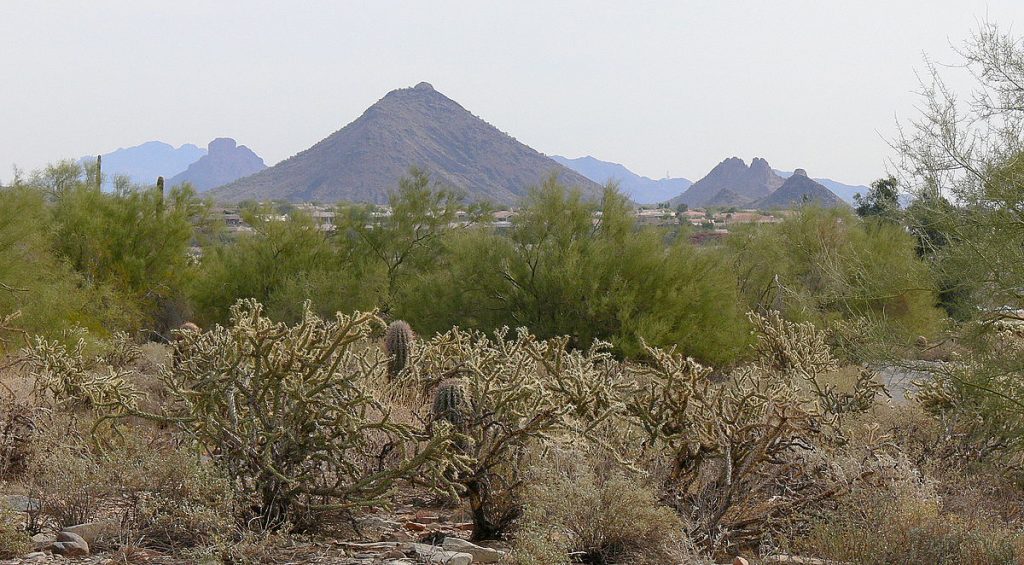BuzzFeed News reporter John Stanton covers ecumenical efforts to provide aid to those trying to reach the U.S. through the southern border, in a stretch of hot, dangerous land where 2,000 human beings have disappeared and 3,000 have died.
Since 2002, the Tucson Samaritans have responded to the immigrant crisis in Arizona by leaving water, food and supplies in 20,000 square miles of desert, and for three years artist Alvaro Encisco (originally South American) has marked these dropoffs with a wooden cross “adorned with red dots to mark where an increasing number of migrants have died chasing the American dream.”
The death toll is high, and could go higher:
“On average it’s 150 a year. On average. So it’s like a commercial airliner going down every year,” Kovatch says of the death toll in the 20,000 square miles where the Tucson Samaritans and a network of affiliated humanitarian groups work.
Activists worry those numbers will grow under the Trump administration. In January, Congress gave Trump more than $1 billion to strengthen existing stretches of the border fence and dramatically increase the number of Customs and Border Protection agents guarding the southern border. This will force larger numbers of migrants to detour through the harsh, remote desert, they say.
Activists also worry about CBP’s approach to their humanitarian work. Earlier this month, dozens of heavily armed agents raided a medical relief camp operated by the humanitarian group No More Deaths. With a small army of PR officials in tow to capture — and tweet — the raid, agents arrested four Mexican migrants who had come to the camp looking for medical help.
The Tucson Samaritans are run by Southside Presbyterian Church, and are only one group of many:
The Samaritans are part of a broad network of organizations working in the Sonoran Desert to save as many immigrants as they can, and to find the bodies of those they can’t. When they come upon a corpse, they alert local authorities to retrieve it.
While some groups, like the Aguilas del Desierto, include members who were once undocumented immigrants to the United States or who have lost family members to the desert, others, like No More Deaths, are made up of earnest young people whose volunteerism is fueled by outrage. When Emma, a 29-year-old native of Kansas City, Missouri, who works with No More Deaths, first came to Arizona, she didn’t know the border crisis even existed. But having worked in Turkey with aid groups tending to Syrian refugees, once she heard the stories of migrants’ dangerous treks through the desert, she knew she had to volunteer.
“There was this interesting and terrible moment when I moved from Turkey to here and found out basically the same thing was happening,” said Emma, who didn’t want her full name published for fear of being targeted by anti-immigration activists. “It was like, ‘Oh, we’ve militarized the border, we’ve given people no other options, and they have to take these deadly risks. And people are dying.’”
The CBP has been accused of tracking immigrants with cameras and at the activists’ drop-off points, which may change humanitarians’ strategies.
More broadly, activists worry the raid signals a change in CBP’s “sensitive locations” policy. Established in 2013, the policy de-prioritizes enforcement actions at schools, churches, and hospitals. Although the guidance does not prohibit raids in these spaces, the practical effect has been to make them off limits to border patrol agents.
But despite those fears, activists like Enciso say they will continue their work, even if it means adapting their tactics or coming into confrontation with authorities. On Saturday, 35 vehicles took more than 50 volunteers into the desert to mark the Tucson Samaritans’ 15th anniversary. The day-long event, dubbed Flood the Desert, served to help migrants as well as to “make our presence known” to local communities and the border patrol, said Deborah McCullough, a Samaritan who took part in it.
Photo: Sonoran desert, By Wars – Own work, CC BY 2.5

